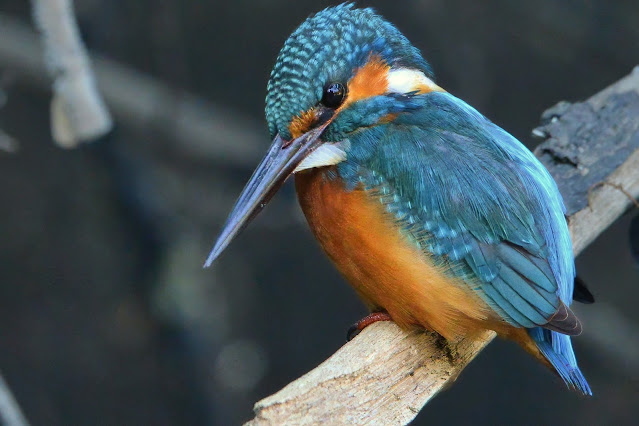Blue-tailed bee-eater (Merops philippinus) नीलदुम पतरिंगा, बड़ा पतरिंगा, नीलपुंछ पतरिंगा - Birds Around Me 240
Among the most captivating avian wonders of South and Southeast Asia is the Blue-tailed Bee-eater (Merops philippinus), known locally by names such as नीलदुम पतरिंगा, बड़ा पतरिंगा, and नीलपुंछ पतरिंगा. This slender, vibrant bird enchants both seasoned birdwatchers and casual observers with its graceful flight, radiant plumage, and acrobatic hunting skills.
 |
| Blue-tailed bee-eater (Merops philippinus) नीलदुम पतरिंगा, बड़ा पतरिंगा, नीलपुंछ पतरिंगा Jabalpur, India April 2025 |
Measuring approximately 23 to 26 centimeters in length, including two elongated central tail feathers, the Blue-tailed Bee-eater displays a stunning palette: green upperparts, a blue tail, a yellow and chestnut-colored throat, and a sharp black eye-stripe outlined by a fine blue line. Males and females look similar, contributing to their unified presence when seen in pairs or flocks.
Preferring open landscapes near water bodies such as riverbanks, wetlands, and coastlines, these bee-eaters are highly migratory. Their seasonal movement brings them across India, Sri Lanka, Bangladesh, and as far as parts of Southeast Asia. One such striking sighting was recorded in Jabalpur, India, in April 2025, highlighting their enduring presence in the region’s natural rhythm.
Blue-tailed Bee-eaters are aerial hunters. Their diet revolves around flying insects—particularly bees, wasps, hornets, and dragonflies. With impeccable timing and skill, they catch their prey mid-flight. Before consumption, they strike the insect against a perch to kill and disarm it, demonstrating both instinctive precision and intelligence. Their distinctive “teerp” call, a soft, rolling whistle, adds a melodic note to open landscapes, often signaling their presence before they’re seen.
During the breeding season, these birds nest in colonies. They excavate tunnels up to two meters deep in sandy banks or open ground, where the female lays 5 to 7 spherical white eggs. Both parents share incubation duties and care for the hatchlings, emphasizing their cooperative nature.
Beyond their physical beauty and ecological role, the Blue-tailed Bee-eater carries deep cultural and symbolic significance. In various traditions, the bird is associated with transformation and renewal—its migratory habits and vivid coloration echo the cycles of nature and personal growth. Its role in managing insect populations connects it to themes of balance and harmony. Some even see the bee-eater as a spirit animal, representing mindfulness, adaptability, and overcoming adversity with elegance. Spotting one is often considered a sign of prosperity or spiritual clarity.
In essence, the Blue-tailed Bee-eater is far more than just a pretty bird. It is a symbol of nature’s grace, resilience, and interconnectedness—an aerial artist whose presence reminds us to marvel at the everyday wonders around us.
https://birds.rekabira.in/p/this-is-list-of-birds-i-clicked-since.html
 |
| Blue-tailed bee-eater (Merops philippinus) नीलदुम पतरिंगा, बड़ा पतरिंगा, नीलपुंछ पतरिंगा Jabalpur, India April 2025 |

.jpg)

.jpg)
Comments
Post a Comment